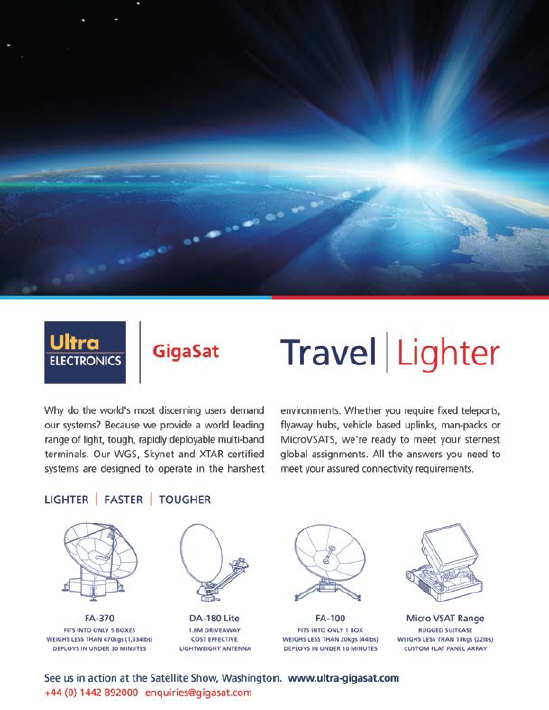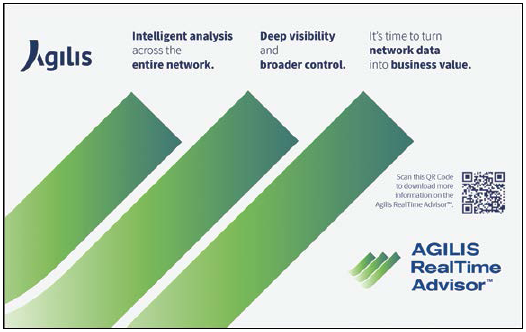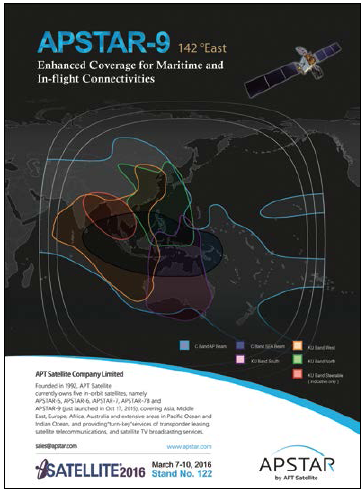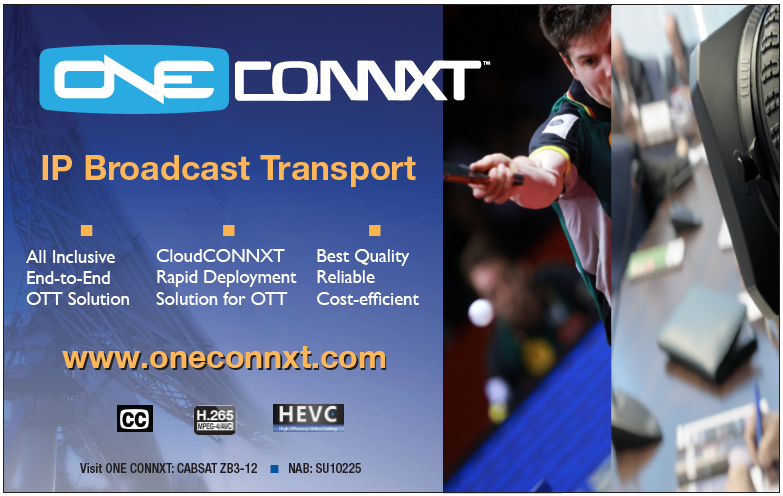The satellite communications market is undergoing a drastic change as satellite operators’ different High Throughput Satellite (HTS) strategies come to life, moving from concept to launch to commercial availability.

These new and innovative satellite designs provide service providers with the opportunity to generate new revenue sources through different economic models. A drastically lower cost per bit delivered to end users provides the potential for service providers to continue to differentiate in the competitive markets they service today while providing the opportunity to address new markets.
However, with this opportunity for commercial growth comes significant challenges that can only be overcome with a robust tool set that focuses on maximizing end user Quality of Experience (QoE) while meeting these new healthy economics.
In the world of traditional wide beam designs, two distinctly different markets arose:
• A high-end market that required always-on connectivity at dedicated throughputs
• A low-end market that was addressed through inexpensive remote kits and bandwidth sharing to load balance space segment costs across multiple remotes, thereby providing a lower overall cost per remote
For both markets, space segment was priced at the proper rate (in MHz) in the proper band (C-or Ku-band) to allow service providers to reach the correct application-based price (in Mbps) per vertical. Likewise, ground equipment was designed and priced around these per-vertical “sweet spot” economics. A service provider would combine these two elements, coupling the proper space segment with the proper ground solution to provide the desired economics and service levels for its end users, whether they are high-end or low-end.
A third market, the middle market, has come to the forefront. Companies servicing the middle market experienced a spike in traffic demand by their end users, who were requiring enhanced services with significantly more throughput to support a different application mix—one dominated by multimedia content requiring ever-increasing bandwidth.
This demand is being driven by medium and high resolution video and remote applications-aware networks that require the performance levels provided by terrestrial alternatives. Unfortunately, many ground equipment toolsets designed for the low-end market are not able to support these higher bandwidths.
Likewise, many high-end solutions are not tooled to provide the economics that are required by the middle market. As a result, new platform options arose to meet these demands by combining the performance levels required by the high-end market and the potential economics of the low-end.
In parallel, new innovative HTS designs were announced and are now being implemented to provide the total solution package to meet the demands of this growing new market subset.
The pairing of innovative ground equipment with more powerful and flexible space segment options provides the opportunity for growth if the proper tools are leveraged on the ground. These tools include higher order modulation and coding and the inherent traffic processing capability of the platform teamed with the chosen satellite access technology.
Just as important in the complex new operational world of HTS are other aspects of a ground equipment solution’s toolset, specifically traffic handling capabilities, the levels of network management possible, the need for detailed network analytics along with issue prevention and resolution. Lastly, but not least importantly, a satellite solution must be able to expand gracefully, with remotes being brought onto the network easily and skillfully with minimal interference being generated at each remote.
In this new world of HTS, service providers need to re-evaluate their approaches to the market(s) they serve and ensure they are equipping themselves with the proper tools to unleash the potential that HTS offers and be able to reach the promised economics. While most ground solutions designed around wide beam designs can be used with new smaller spot beam designs, few are optimized for operation on these new spacecraft. Success will come to the service provider that chooses the proper instruments on which to grow its business cost effectively.
Overall network efficiency has moved beyond higher order modulation and coding methods to intelligent traffic handling and dynamic bandwidth and resource allocation. The Mbps/MHz ratios that are required to penetrate new markets come from teaming higher order modulation and coding with compression techniques and intelligent traffic handling.
The addition of dynamic bandwidth allocation to these elements can reduce the price per Mbps to an end user from $1,000 per Mbps down to $500, $200 or even $100 per Mbps, depending upon traffic type and end user service level requirements.
In general, HTS offerings combine four main attributes to produce the healthy new economics that the satellite community requires.
These include:
• More bandwidth per beam
• An increased number of beams per satellite
• Increased downlink performance
• Increased uplink performance
New spacecraft designs provide the ability to transmit significantly higher throughputs for a given connectivity. These designs allow the delivery of hundreds of Mbps at a time through a single channel while dynamically sharing bandwidth through intelligent traffic handling at these extremely high speeds.
Ground equipment solutions designed to leverage these larger bandwidth beams must have the ability to process and optimize traffic flows of different priorities at these significantly higher data rates to ensure maximum resource utilization. A highly intelligent traffic handling engine is essential here to ensure that end users are provided the levels of service that they require. Different protocols must be handled intelligently, with more important traffic flows being given priority over others. In addition, lossless compression techniques further maximize the total net efficiency of each link.
It is now well known that frequency re-use is the mechanism that provides HTS designs with their substantial increase in bandwidth per spacecraft. This is implemented through a substantial increase in the number of beams per satellite. This significant increase in the number of beams creates a challenge for the service provider to cost economically scale ground infrastructure to support a given geographic coverage.
A service area serviced by a single wide beam may require five, ten or twenty beams in a small spot beam environment. The larger the geographic coverage, the more beams are that will be required and growth to new areas typically requires the addition of several new uplinks.
A ground equipment solution for this type of design must provide scalable growth paths to tie costs to revenue as the number of beams in use increases. Network information and control are keys to success. Network management and real-time network analytics are essential to maximize resource utilization and minimize downtime. In addition, interference mitigation becomes a much higher priority within an HTS environment due to the fact that frequencies are being highly re-used and improper remote equipment access as a network expands can quickly decrease the overall capabilities of a small spot beam design.
Higher order modulation and coding methods can be leveraged to take advantage of the third attribute, the increased downlink performance that HTS designs offer. Service providers must arm themselves with a platform engine that leverages higher order modulations and more powerful coding teamed with decreased carrier rolloffs and near Shannon Limit physical layer performance. Ground equipment engines must be able to keep up with these higher potential throughputs to ensure traffic flows properly, filling the transmission pipes accordingly.
The increased uplink performance of the innovative new spacecraft designs enable a user to significantly increase the number of Mbps that can be transmitted through a given remote kit. Because satellite antennas receive much less ground noise from earth (the “T” in a satellite’s G/T parameter), signals can be transmitted at significantly lower levels towards the satellite.
Alternatively, significantly more Mbps can be reliably transmitted with the same signal level towards the satellite. A new efficiency parameter that is referenced in HTS design is Mbps per Watt, which clarifies how many Mbps can reliably be sent through a given amplifier on the ground.
Care must be taken, however, to ensure the chosen remote ground equipment is tooled to handle this potential fourfold or eightfold increase in Mbps and packets per second. Using a ground device that cannot take advantage of this attribute leaves money on the table for the service provider.
Increased revenue per site can be prohibited through throttled remotes that can’t process packets fast enough and/or costs will need to be incurred to visit remote site to upgrade existing remote kit in the field to support these higher throughputs.
Cost effectiveness comes through an intelligent and efficient utilization of resources. While all roads do not lead to HTS as wide beam designs will continue to be the best fit for simultaneous content distribution to thousands of sites or connecting tens of sites that are very geographically diverse, platforms must be future-proof.
It’s important that a service provider equip itself with a toolkit that can be used on existing wide beams for certain applications while also having been optimally designed to take advantage of the new performance levels of HTS. This method protects the service provider’s investment while providing maximum potential for future revenue growth.
From network design and implementation to steady state operation on traditional wide beams or new smaller spot beams, intelligence is crucial to maximizing an end user’s QoE, maximizing resource utilization and minimizing downtime. It starts with powerful iterative network design tools that allow a service provider to analyze anticipated traffic loads over satellites with different performance characteristics to quickly predict overall link and network performance.
These tools provide the service provider insight into the best satellite access method to use for a given end user set, be it low-end, high-end or middle market. Understanding the total costs of ownership over a three or five year project are key to ensuring that the proper application-based per Mbps price can be generated.
During network implementation and steady state operation, whether the access technique be dedicated or shared, a network management tool that gathers real-time resource loading and traffic analytics allow the service provider to quickly react and reassign resources to maintain these per Mbps price points is key.
The correct remote commissioning tools are required to minimize both time and money of deploying new remotes onto the system while meeting interference isolation thresholds.
In summary, it is essential for a service provider in the highly competitive satellite communications market to maximize an end user’s Quality of Experience at the right application-based price per Mbps.
This QoE will vary depending upon the target market, whether the user requires a low-end, high-end or mid-range service offering and because of this, a solution for one type of user is almost always not a good fit for another type of user.
While HTS offerings provide the promise of compelling and healthy new economics, these promises cannot be met solely by the spacecraft itself. It is only through the coupling of purpose-built ground solutions equipped with the right tools will these pronounced application-based price decreases be achieved along with the targeted QoE.
comtechefdata.com/
Steve Good is Vice President, Marketing for Comtech EF Data. Good leads the divisional marketing functions, objectives and initiatives based on long-term product and profitability goals. A satellite industry veteran, he has 20+ years experience in a variety of positions in which he has bridged sales and engineering organizations to create and implement marketing plans around product, pricing, placement and promotion strategies. During his career, he has held senior management, marketing, product management and engineering positions with Intelsat, Verestar, Viacast and Hughes Network Systems. Also a former member of the Comtech EF Data team, Good previously held the position of Vice President, Sales Engineering.
Good holds a Bachelor of Science in Electrical Engineering from Penn State University. He also holds a number of advanced degrees, including a Master of Science in Electrical Engineering from Johns Hopkins University, a Master of Business Administration from the University of Maryland and a Master of Science in Computer Engineering from Virginia Polytechnic Institute.





